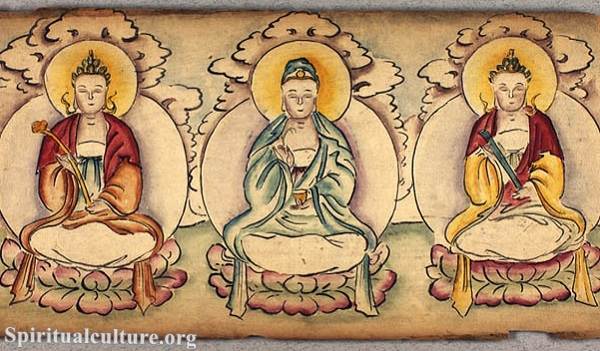The Threefold Training is a fundamental teaching in Buddhism that refers to the three areas of training that practitioners must engage in to achieve liberation from suffering and attain enlightenment. These three areas are:
1. Sila (Morality)
In Buddhism, Sila (Morality) refers to the ethical and moral conduct of a practitioner, which is essential for spiritual development and the attainment of enlightenment. It involves refraining from harmful actions such as killing, stealing, lying, sexual misconduct, and other unwholesome behaviors that cause harm to oneself and others.
Sila is considered one of the three pillars of Buddhist practice, alongside Samadhi (Concentration) and Prajna (Wisdom). It is believed that the practice of Sila is the foundation upon which the other two pillars of practice are built.
Sila is not just about following a set of rules or commandments, but rather it involves cultivating positive qualities such as generosity, compassion, kindness, honesty, and integrity. Practitioners are encouraged to develop a deep understanding of the interdependence of all beings and to act in ways that promote harmony and well-being for all.
In Buddhism, Sila is not imposed by an external authority but is seen as a personal commitment that arises from one’s own understanding of the nature of reality and the interconnectedness of all things. Through the practice of Sila, practitioners develop a sense of moral responsibility and a commitment to living a life that is beneficial to themselves and others. This not only leads to a peaceful and harmonious life but also helps to reduce suffering in the world.
2. Samadhi (Concentration)
In Buddhism, Samadhi (Concentration) refers to the cultivation of a focused and one-pointed mind through meditation practice. It is one of the three pillars of Buddhist practice, alongside Sila (Morality) and Prajna (Wisdom). Samadhi is considered essential for spiritual development and the attainment of enlightenment.

The practice of Samadhi involves developing the ability to sustain attention on a single object or point of focus, such as the breath, a mantra, or a visual image. This helps to quiet the mind, reduce mental distractions, and increase awareness of one’s inner experience. As concentration deepens, practitioners may experience states of heightened clarity, joy, and equanimity.
The ultimate goal of Samadhi is to attain a state of “jhana,” or deep absorption, in which the mind is completely focused and unified. This state is characterized by a sense of tranquility, stillness, and bliss. Jhana is considered an important precursor to the development of Prajna (Wisdom), as it helps to cultivate a deep understanding of the nature of reality.
Samadhi is not just about developing concentration for its own sake, but rather it is seen as a means to an end. Through the cultivation of Samadhi, practitioners can develop the ability to observe their thoughts, emotions, and sensations with clarity and equanimity, which helps to develop insight into the nature of reality and the nature of the self.
Overall, the practice of Samadhi is an essential component of Buddhist practice, as it helps to develop a calm and focused mind, which is necessary for spiritual development and the attainment of enlightenment.
3. Prajna (Wisdom)
In Buddhism, Prajna (Wisdom) refers to the development of insight into the nature of reality. It is one of the three pillars of Buddhist practice, alongside Sila (Morality) and Samadhi (Concentration). Prajna is considered essential for spiritual development and the attainment of enlightenment.
The development of Prajna involves cultivating an understanding of the Four Noble Truths, which are:
- The truth of suffering (dukkha)
- The truth of the origin of suffering (samudaya)
- The truth of the cessation of suffering (nirodha)
- The truth of the path leading to the cessation of suffering (magga)
Through the cultivation of Prajna, practitioners come to understand that suffering is an inherent part of life and that it arises from attachment and clinging to impermanent phenomena. They also come to understand that the cessation of suffering is possible through the cultivation of wisdom, morality, and concentration, and that the path to liberation involves the development of these qualities.
The development of Prajna also involves an understanding of the three marks of existence, which are:
- Impermanence (anicca)
- Suffering (dukkha)
- Non-self (anatta)
Through the cultivation of Prajna, practitioners come to understand that all phenomena are impermanent, unsatisfactory, and devoid of a permanent self. They also come to understand that the self is a mere construct and that the concept of a permanent, unchanging self is an illusion.
Overall, the development of Prajna is an essential component of Buddhist practice, as it helps to develop a deep understanding of the nature of reality and the nature of the self. Through the cultivation of wisdom, practitioners can free themselves from the cycle of suffering and attain enlightenment.




